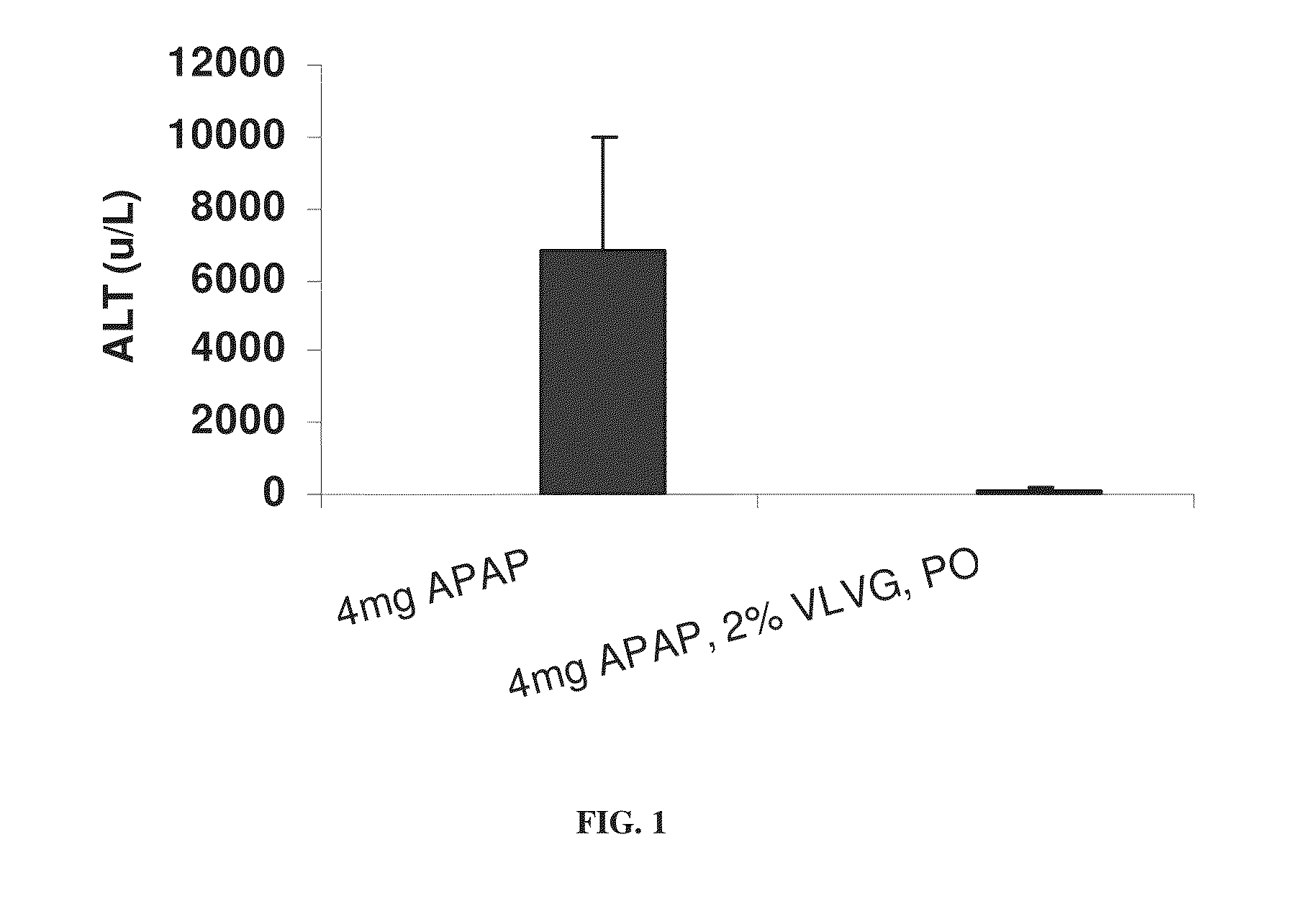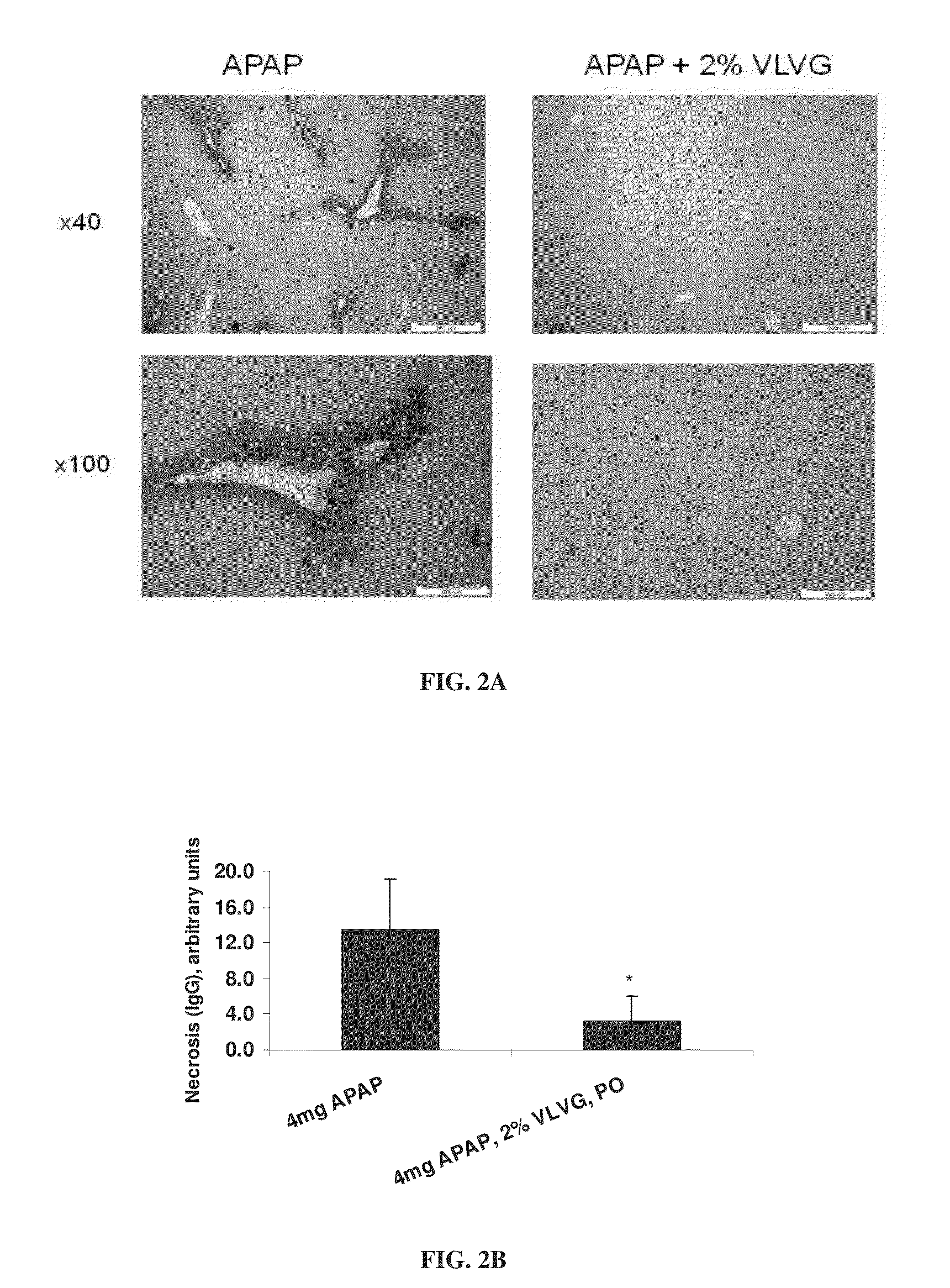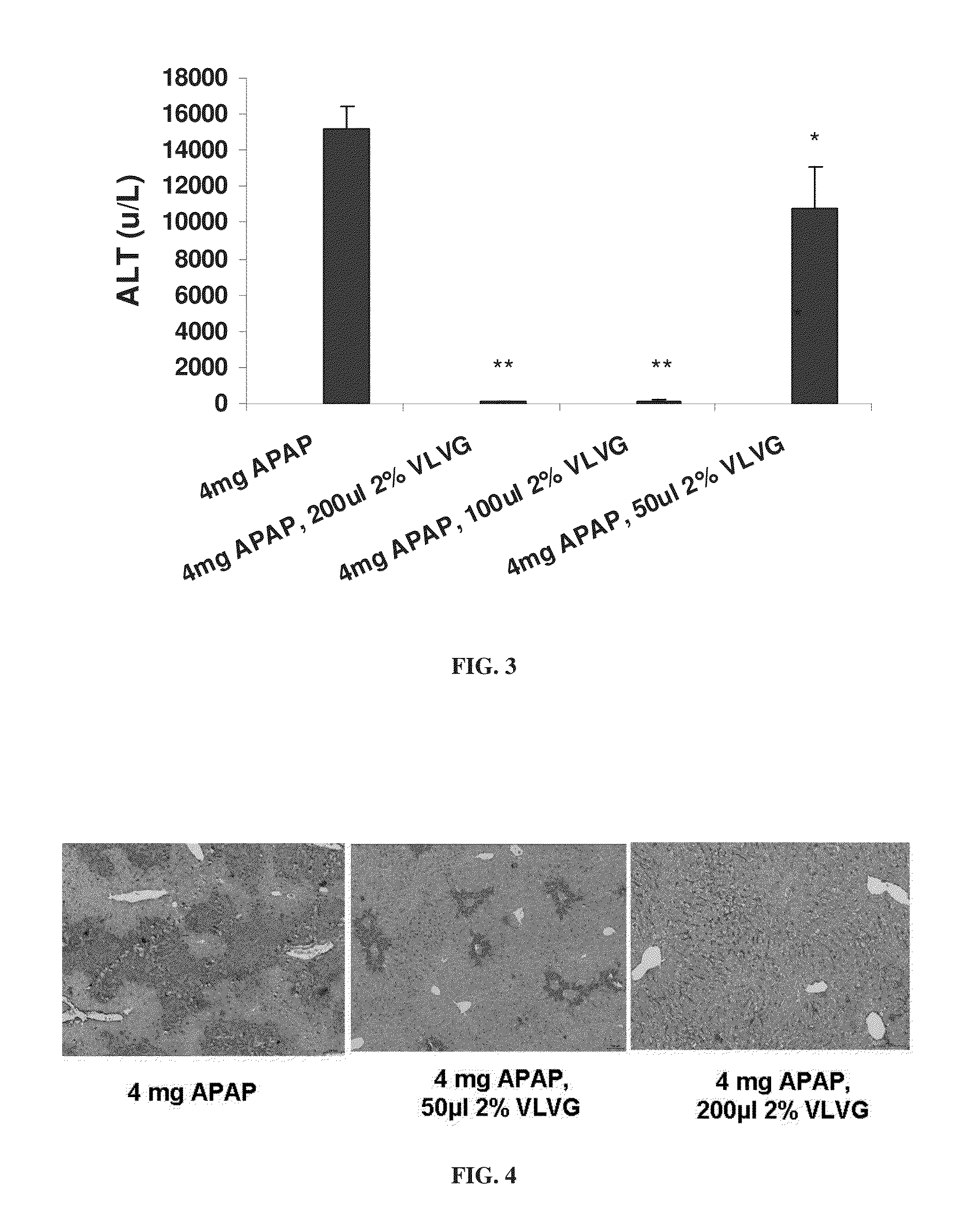Use of alginate compositions in preventing or reducing liver damage caused by a hepatotoxic agent
a technology of hepatotoxic agents and compositions, applied in the field of therapy, can solve the problems and achieve the effect of reducing liver damag
- Summary
- Abstract
- Description
- Claims
- Application Information
AI Technical Summary
Benefits of technology
Problems solved by technology
Method used
Image
Examples
example 1
Effect of Alginate on Paracetamol Hepatotoxicity (Preventive Model)
[0290]Aqueous solutions of 2% alginate (w / v) were prepared by homogenization in saline, as described in the Materials and Methods section, from the following types of alginate:
[0291]VLVG (solution viscosity 15.5 mPa*seconds, molecular weight 30-50 kDa);
[0292]LVG54 (solution viscosity 269 mPa*seconds, molecular weight 100 kDa); and
[0293]LVG150 (solution viscosity 879 mPa*seconds, molecular weight 156 kDa).
[0294]Solution viscosity and molecular weight were characterized as described hereinabove.
[0295]The effect of alginate on paracetamol hepatotoxicity was investigated in a mouse model, as described in the Materials and Methods section.
[0296]To this end, 200 μl of a 2% solution of VLVG alginate was administered per os 30 minutes prior to intoxication with 4 mg paracetamol. Paracetamol intoxication was evaluated by measuring levels of ALT and IL-6, by measuring the weight loss typical of paracetamol intoxication, and by...
example 2
Effect of Alginate on Paracetamol Hepatotoxicity (Therapeutic Model)
[0324]In view of the results presented in Example 1, which show a strong protective effect of alginate when administered prior to administration of paracetamol (a preventive model), the effect of alginate on paracetamol hepatotoxicity was to investigated in a therapeutic model, in which alginate was administered concurrently with, or subsequent to, administration of paracetamol, as described in the Materials and Methods section.
[0325]To this end, a 2% solution of VLVG alginate was prepared as described hereinabove, and administered per os at a volume of 200 μl 30 or 60 minutes after intoxication with 4 mg paracetamol. Paracetamol intoxication was evaluated by measuring levels of ALT and IL-6, and by measuring body weight, as described hereinabove.
[0326]As shown in FIG. 10, VLVG alginate administered 30 minutes after paracetamol administration dramatically reduced serum ALT levels in mice 24 hours later, whereas VLVG...
example 3
Biodistribution of Alginate
[0334]The biodistribution of alginate was determined using immunohistochemical staining for biotin-labeled alginate.
[0335]VLVG alginate was labeled with biotin via carbodiimide chemistry, using procedures as described in Freeman et al. [Biomaterials 29:3260-3268 (2008)]. No more than 3% of uronic acid residues were modified, so the biotin-labeled alginate was quite similar to the non-labeled alginate. A solution of 2% biotinylated VLVG alginate was administered to mice intraperitoneally (200 μl per mouse), and the mice were sacrificed after 48 hours. The liver, spleen, colon or other tissue were then harvested and fixed in 10% formalin and were then embedded in paraffin and sectioned (specimens of 5 μm). For biotin detection, slides were first de-paraffinized, followed by addition of target retrieval solution and then blocking by peroxidase blocker (DAKO). After incubations and rinsing, Streptavidin-peroxidase (DAKO) was applied. For color detection, DAB (...
PUM
| Property | Measurement | Unit |
|---|---|---|
| molecular weight | aaaaa | aaaaa |
| molecular weight | aaaaa | aaaaa |
| molecular weights | aaaaa | aaaaa |
Abstract
Description
Claims
Application Information
 Login to View More
Login to View More - R&D
- Intellectual Property
- Life Sciences
- Materials
- Tech Scout
- Unparalleled Data Quality
- Higher Quality Content
- 60% Fewer Hallucinations
Browse by: Latest US Patents, China's latest patents, Technical Efficacy Thesaurus, Application Domain, Technology Topic, Popular Technical Reports.
© 2025 PatSnap. All rights reserved.Legal|Privacy policy|Modern Slavery Act Transparency Statement|Sitemap|About US| Contact US: help@patsnap.com



